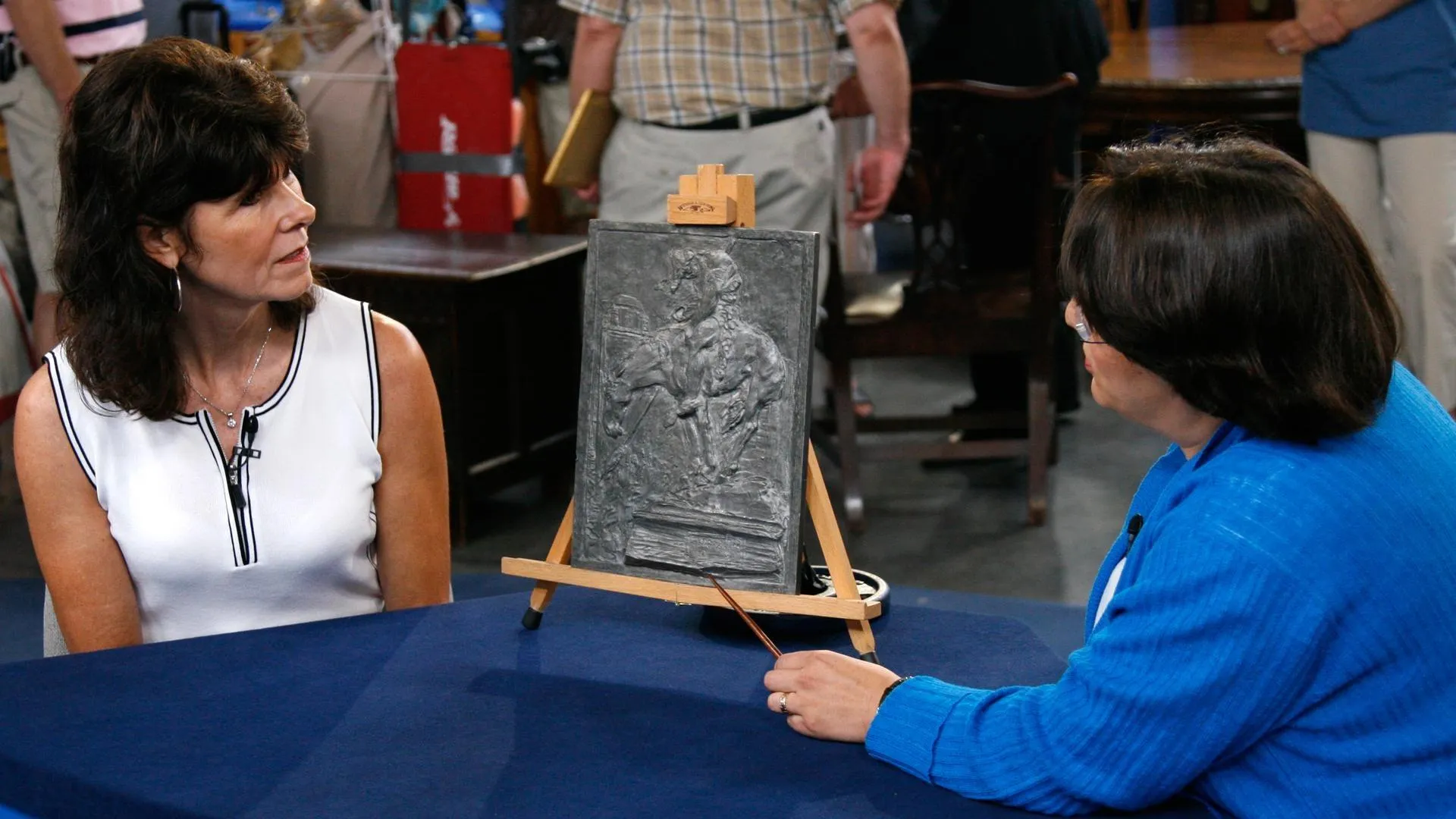APPRAISER: Where do you find this stuff? Where do you go?
GUEST: Thrift stores, antique stores, sales, estate auctions, yard sales – mostly thrift stores.
APPRAISER: Well, you've brought some of your thrift shop finds today. And this one you were wearing. Tell us about this one. You paid...?
GUEST: Originally, $49.99 plus tax. It came to $53.81. I saw "14k," but I wasn't 100 percent positive. I know that a lot of stuff is fake. It looked like it had been dumped in a vat of motor oil, and then run through the garbage or something. It was just filthy.
APPRAISER: Oh, boy.
GUEST: And the clasp was broken, but for $49.99, I thought, "Well, I'll take a chance." Took a risk and bought it for 50 bucks.
APPRAISER: And then you took it to your jeweler to get it fixed, and he told you?
GUEST: He said they are in fact diamonds, and roughly around four carats, and that I should have a written appraisal on it, so that they can measure all the diamonds and make sure. And I had the clasp fixed and the safety chain put on it. It cost me $105.
APPRAISER: Wow. So for a big investment of $158 you've got yourself a diamond bracelet with four carats of diamonds. You know how they figure that? Real quick math; if you have little diamonds that are one-tenth of a carat each and there were 40 of them... that's four carats.
GUEST: Okay.
APPRAISER: So that's a good find in a thrift shop. You're doing aces. All right. But this is the piece you wanted to find out about today.
GUEST: Right.
APPRAISER: I took this off your wrist. "Let me see that."
GUEST: That's right.
APPRAISER: But this one, you bought in another thrift shop, and what'd you pay for that?
GUEST: Somewhere in the vicinity of $20 or so.
APPRAISER: Was there a 14-karat mark on this one that you recognized?
GUEST: I did not see a mark anywhere on it, but when I saw the combination of the golds, you know, I was looking at it thinking it might be rose gold, but I wasn't sure.
APPRAISER: This is a Victorian slide chain. It's called a slide chain because the center element here is a slide that goes up and down on the chain.
GUEST: Okay.
APPRAISER: And that adjusts the way that it drapes on the neckline. The chain and the slide are both 18-karat gold, which I tested with the acid back at the table. And it has little tassels on either side of the slide that are decorative. All of the elements are 18-karat gold, but in multiple colors of gold, and the butterfly has an emerald and little seed pearls in it. The Victorian pocket watch would hang here from the swivel at the bottom, and the chain was long enough to wear double, and let me just pick it up and show there's a lot more to it than what you're seeing. The chain is about 50 to 55 inches long, and it's woven 18-karat gold. It's very beautiful. I did find a mark on the back of the clasp, and it's an unusual mark, just looks like a design, that tells us that it was made in Istanbul, Turkey for the European market to their taste. It was not inexpensive in its day. And these chains are quite useful and collectable. So in today's market, a chain like this, if you saw it in an antique shop, would be selling for $1,500 to $1,800.
GUEST: Oh, wow, great.
APPRAISER: So again, you did pretty good on your $20. You've got probably a $2,500 bracelet at retail for your $158 including tax. And for your $20 slide chain, you've got $1,500 to $1,800
GUEST: Awesome. Awesome.
APPRAISER: at retail in an antique shop.
GUEST: Okay. Thank you very much.
APPRAISER: So keep picking.
GUEST: Okay, will do. I guess I'm just a treasure hunter.
APPRAISER: Yeah, well, we're all treasure hunters here. That's what we do.



